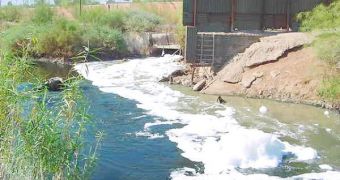Scientists in the United Kingdom have just finished working on a new type of fish, which has been created from scratch using brand new technologies. The creatures look and behave like the real deal, but they are actually robots, designed for the only purpose of swimming in various portions of the oceans and recording the variations in the amounts of pollution registered. The device is also able to transmit the data over a wireless connection to a central hub that will then piece together a larger image of a region, using information from several fish.
Scheduled to be deployed in the northern Spanish port of Gijon in 2011, the robots are now idly swimming in the London Aquarium, awaiting their deployment. They have been designed and constructed by professor Huosheng Hu from the University of Essex, U.K., and his colleagues. “It's a little lab onboard the fish,” Rory Doyle, BMT Group senior research scientist, said. BMT is the independent engineering company that has helped coordinate the rollout of the robots, with funding from the European Commission.
The numerous tiny sensors each of the units will be equipped with will provide real-time analysis of any situation, and the fish are able to detect fertilizer runoffs or oil spills just as soon as they happen. Scientists controlling them can thus determine what the extent of the damage is and easily offer a forecast on how the situation would unfurl. “Nature has done it very, very well,” Doyle added, while explaining why he and his team had chosen a fish-style design for the new probe.
Because of its shape, it has a very low drag in the water and can move relatively fast. Other designs have been deemed to be more ineffective than this one, and the carp-shaped robot has thus become a reality. Still, the downside to the design is that it costs some GBP 20,000 ($29,000) per unit to produce, which means that we won't be seeing “fleets” of the fish in waters around the world anytime soon.
According to the researchers in charge of the project, the robotic fish has nothing to fear in the wild, as field tests have shown that it's more than able to get past nets, and also that sharks seem to move away from the fake specimen, on account of the magnetic field it gives out, which most likely interferes with their own.

 14 DAY TRIAL //
14 DAY TRIAL //